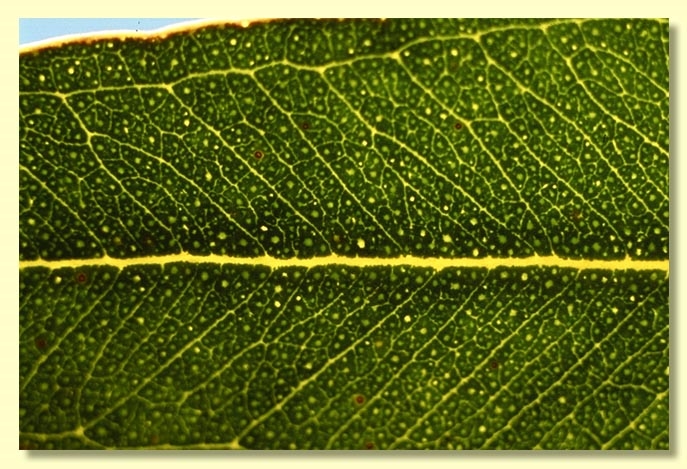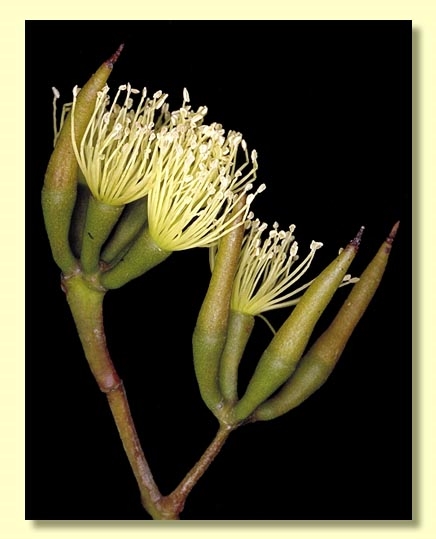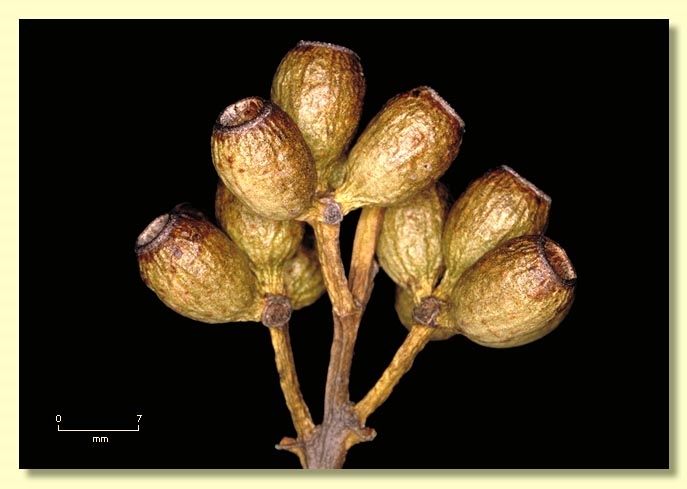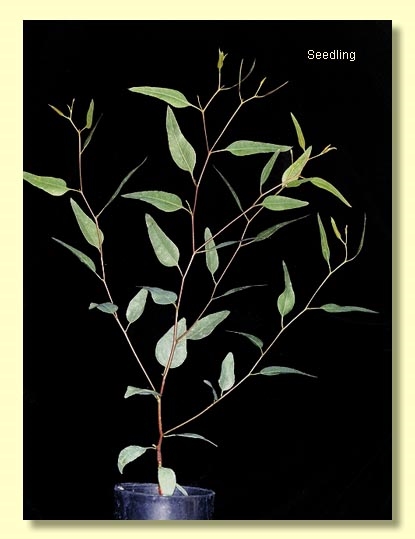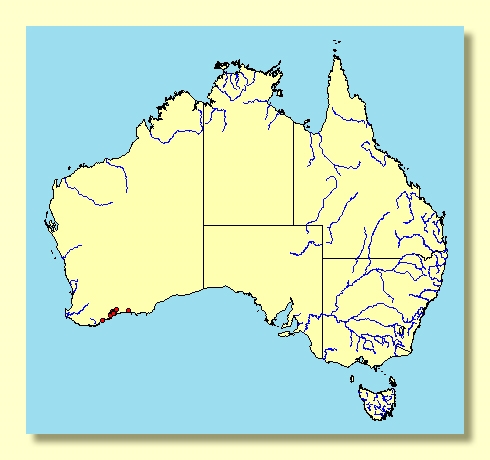Eucalyptus | Symphyomyrtus | Bisectae | Glandulosae | Levispermae | Levispermae
Euclid - Online edition
Eucalyptus redunca
T: In gravelly sterile sand on the hill Konkoberup, near Cape Riche, Western Australia, L.Preiss 232; lecto: MEL (figures 12a, 94, 95, 97).
Bark smooth, grey and pale brown shedding in short ribbons.
Branchlets usually without pith glands, if any present then few.
Juvenile growth (coppice or field seedlings to 50 cm): not seen.
Adult leaves alternate, petioles 0.8–1.5 cm long; blade lanceolate to narrowly lanceolate, 5–7.5 cm long, 0.7–2.5 cm wide, base tapering to petiole, margin entire, apex pointed, concolorous, dull but aging to glossy inside crown, green, side-veins greater than 45° to midrib, reticulation moderate, intramarginal vein remote from margin, oil glands mostly island.
Inflorescence axillary unbranched, peduncles widen apically, 0.8–2(2.5) cm long, buds ?9 to 11, pedicellate (pedicels 0.2–0.5 cm long). Mature buds long-fusiform (1.6–2.6 cm long, 0.3–0.5 cm wide), scar present (outer operculum shed early), operculum conical to horn-shaped, two to three times the length of the hypanthium and of equal width at the join, few outer stamens erect, most stamens variably deflexed, anthers oblong, dorsifixed, dehiscing by longitudinal slits, style long and straight, stigma tapered to rounded, locules 3, the placentae each with 4 vertical rows of ovules. Flowers lemon-coloured.
Fruit pedicellate (pedicels 0.1–0.5 cm long), barrel-shaped, 0.7–1.1 cm long, 0.5–0.8 cm wide, disc descending vertically, valves 3, to rim level or rarely enclosed.
Seeds pale brown to straw-coloured, 0.7–1.5 mm long, sub-spherical or sometimes cuboid to ovoid, surface smooth, hilum ventral/terminal.
Cultivated seedlings (measured at ca node 10): cotyledons Y-shaped (bisected); stems rounded in cross-section; leaves always petiolate, opposite for 2 to 4 nodes then alternate, lanceolate to ovate, 5–7 cm long, 1.5–3 cm wide, dull to slightly glossy, green.
Flowering has been recorded in July.
A shrub endemic to Western Australia, of southern coastal distribution from Cape Riche east to the Thumb Peak area of Fitzgerald River National Park, extending inland to the Ravensthorpe Range where it becomes a larger mallee. The stems are smooth and the adult leaves green, dull at first maturing glossy, buds quite elongated.
Eucalyptus redunca belong in Eucalyptus subgenus Symphyomyrtus section Bisectae subsection Glandulosae because the cotyledons are bisected, the buds have an operculum scar and the branchlets (usually) have oil glands in the pith. Within this subsection E. redunca is one of a group of species that form series Levispermae subseries Levispermae characterised by having smooth more or less spherical seed, a peduncle that widens apically, buds that are narrowly fusiform with some stamens erect and others variably deflexed, usually dull blue-grey to grey-green adult leaves, and few, if any, oil glands in the pith.
Eucalyptus redunca is distinguished from its most closely related species, E. pluricaulis and E. varia, by having slightly longer buds (to 2.8 cm long), much greener adult leaves that are dull over most of the plant but eventually mature glossy, and new growth that is yellow-green. It usually has a low stature due no doubt to its coastal habitat; however, where it occurs further inland in the Ravensthorpe Range it is a taller mallee. E. pluricaulis has dull blue-green to purplish blue adult leaves and E. varia has dull blue-green to green adult leaves that mature only slightly glossy.



